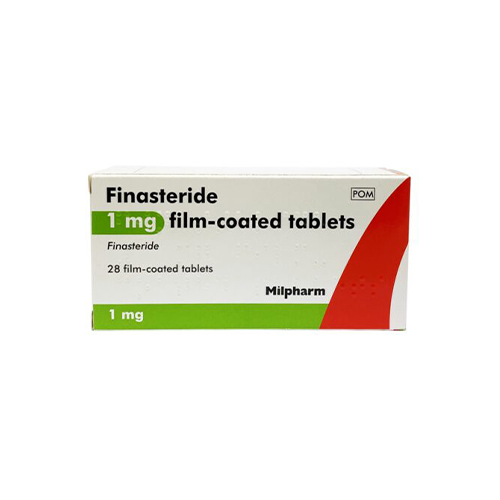- Proven hair loss treatment
- Reduces hair loss
- New hair growth
Finasteride
Finasteride is used for the treatment of male pattern hair loss (also known as androgenetic alopecia). Finasteride increases hair growth on the scalp and prevents further hair loss in men.
What is Finasteride?
Finasteride is the generic name for the incredibly popular hair loss treatment Propecia.
Since its introduction in 1997, finasteride has been demonstrated to be highly effective in numerous clinical studies to treat hair loss (male pattern hair loss or pattern hair loss).
In a study conducted over a period of five years, 90% of men showed significant regrowth and the vast majority said they had maintained their volume of hair.
What is the difference between Finasteride and Propecia?
Propecia is a brand name for finasteride. Both medicines contain the same active ingredients and are used for the same purposes with regard to hair loss treatment.
How does Finasteride work?
It works by reducing the effects of natural enzymes within the body called reductase inhibitors, specifically 5-alpha reductase.
This enzyme normally converts testosterone into DHT. DHT is a more active variation of testosterone which amongst many things has an effect on hair follicles. DHT attacks hair follicles causing hair to slowly fall out Some men have a higher sensitivity to these effects and this is mostly genetic. It blocks the effects of 5-alpha reductase, this leads to a reduction in the concentration of DHT both in the blood. There is then a subsequent reduction in the volume of DHT within the scalp which helps prevent hair loss as well as stimulating new hair growth.
How long does it take to work?
The initial results take up to 3 months to show. You will notice a significant reduction in hair loss by 6 months. By 9 months most men show some evidence of new hair growth.
Often men require a whole year’s treatment to notice significant hair growth. It should be borne in mind that this is highly variable from person to person.
How to take Finasteride
It is very straightforward to take finasteride. Only one tablet should be taken daily. It can be taken at any time, with or without food. If you forget to take your daily dose, you do not need to take an extra tablet, just continue as normal. Do not take a double dose to make up for the one you have missed.
If you miss more than one tablet, please refer to the patient information leaflet available to download or speak to your own doctor or healthcare professional looking after you.
Long-term usage is advised in order to gain the maximum benefits. Once you’ve stopped taking your treatment, balding may resume within 6 to 12 months.
Side effects & precautions
Who should not take Finasteride?
- Women should NOT take this medication under any circumstances
- Pregnant women should avoid handling crushed or broken tablets, there’s a possibility that the drugs could be absorbed through the skin and lead to abnormalities in a male baby. It’s safe to handle the whole tablet.
- Children and anyone under the age of 18
- Men who are already taking finasteride 5mg (Proscar) or any other 5α-reductase inhibitor such as dutasteride (Avodart) for an enlarged prostate.
- You have an allergy to finasteride
- You have been diagnosed with severe liver dysfunction
- You have a history or suspicion of male breast cancer
Who can take it?
- It should be used by adult men only, for the treatment of male pattern baldness.
- It’s been proven to be effective at stabilising hair loss in 18 to 41-year-old men. Its effectiveness in older men has not been established and may be reduced. If you start it at an older age, it may not work as well.
- Please note that use by men over the age of 41 is an ‘off-label’ use of our generic Finasteride brands.
Prescribing ‘off-label’ is a common practice by doctors to ensure a medication can safely benefit as many patients as possible.
Side effects are generally uncommon.
However, some have been reported and include:
Sexual Side Effects and Sexual Dysfunction
- Loss of libido
- Erectile dysfunction
Rarer side effects:
- Depression
- Breast enlargement/growth in men (gynaecomastia)
- Pain in the testicles
Stop using finasteride if you notice any of these side effects and Consult your G.P as soon as possible.
For more information please read the attached patient information leaflet (PIL). All medications have side effects.
Can I buy Finasteride online?
Finasteride prescription online. As Finasteride is a prescription-only medication, you will require a prescription for this treatment. Simply complete our online medical questionnaire and pay for the treatment. One of our doctors will review your consultation. If approved we will deliver it to you the next day.
Documentation
Finasteride Patient Information Leaflet (PIL)



We’re here to help.
Our friendly team is available to help Monday to Friday 9:00am - 5:00pm.
If you need urgent assistance, do not use this service. Call 111, or in an emergency call 999.

